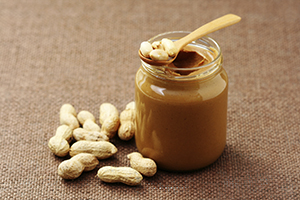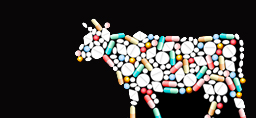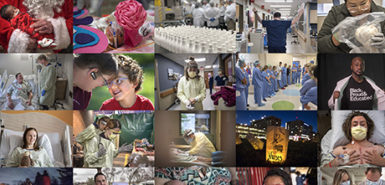
The 18-year-old senior at Grand Rapids’ Forest Hills Eastern High School plays trumpet in the band, swims butterfly on the school team, runs track and cross country, and is now busy selecting from top-tier colleges, with aspirations of becoming an aeronautical engineer.
But while Brendan drinks deeply from most things in life, he is extra careful to consider every bite, thanks to his serious peanut allergy.
“I have to think about every bite I put in my mouth,” he said. “I have to read and re-read labels to make sure there aren’t peanuts in there. I carry an EpiPen in my backpack everywhere I go, and my friends know if I need it, they can jam it into the side of my thigh.”
For Brendan, and the 15 million Americans with similar food allergies, something as simple as peanut extract in a granola bar can be an emergency room trip waiting to happen. But according to a recent study, severe reactions might soon be a thing of the past.

The results were astounding. More than 80 percent of the children who received the probiotic and peanut treatment were able to tolerate peanut at the end of the trial, with fewer than 4 percent of the placebo group tolerant. That’s 20 times higher than normal for peanut allergy, the researchers noted.
The treatment could transform the lives of food allergy patients everywhere — eventually — said Dr. Karyn Gell, MD, of Grand Rapids Allergy.
“It’s super exciting,” Dr. Gell said. “It’s not quite ready for prime time, but it’s exciting. And it is a new form of oral therapy, because they hooked it with a probiotic. It’s trying to get the immune system to be more tolerant. The question is, can we regulate the immune system by using the peanut and the probiotic in a different way? It all goes back to more research needed.”
This research comes on the heels of an earlier announcement of a proposed peanut allergy patch, which would increase the wearer’s peanut tolerance over time. But like the patch, which is still years away, the latest study isn’t perfect, Dr. Gell said.
“They found that seven out of nine kids reached a state of unresponsiveness (to peanut exposure),” Dr. Gell said. “The other problem is the adverse effect. Almost half had an adverse effect; some needed injectable epinephrine for reactions.
“But I think you’re going to have a high demand rate, even with these caveats, because it allows relief of the fear of these accidents. That’s such fear that it affects your quality of life.”
Brendan’s mom, Susan Lenhardt, agrees.
“Brendan’s 18th birthday is tomorrow,” she said. “The thing I’ve said since he was little is I hope they come up with some kind of therapy before he goes to college. He’s a careful kid, and I think it’s made him responsible in a lot of ways, but he’s had to worry more than most kids do.
“You go through things like Halloween, and we always had him put his candy out by the door, and the ‘Halloween Fairy’ would trade it out for Legos. You learn to adjust.”
For Brendan, the adjustment isn’t the hardest part about living with peanut allergy.
“Not being able to eat the food aside, my least favorite part of this is being a ‘special case,’” he explained. “Like going out to dinner with friends, I hate being the special case. I hate being the burden.”
Having relief from that daily burden would change his life, he said, adding that he’d try the treatment, “in a heartbeat.” But even if cured of his allergy, he said some things wouldn’t change.
“No peanut butter sandwiches,” he said. “I hate the smell of peanut butter, I always have. I don’t crave it, honestly.”
While the treatment is still on the horizon for the public, Dr. Gell warned that it’s more complicated than simply mixing peanuts and probiotics.
“Please, please, please, do not try this at home,” she said. “They don’t clearly understand the risks, and no one is advocating we start offering treatment yet. Until we can identify who is the right candidate and the best procedure for each individual, we are not able to offer this therapy in clinical practices yet.”
 /a>
/a>
 /a>
/a>
 /a>
/a>
Developing severe reactions to peanut exposure as an adult has been a roller coaster. I cannot imagine the anxiety a parent with a peanut allergic child (or any food allergy) goes through everytime the child is out of their site. Like Brendan, I also hate to be the ‘special case’ when eating out or at friends and families homes. A therapy that is PROVEN to reduce the severity of a peanut reaction is very tempting to me as a peanut allergy sufferer. There is a downside to this therapy, however; I would probably gain 100 lbs enjoying all the foods I have been forced to avoid.